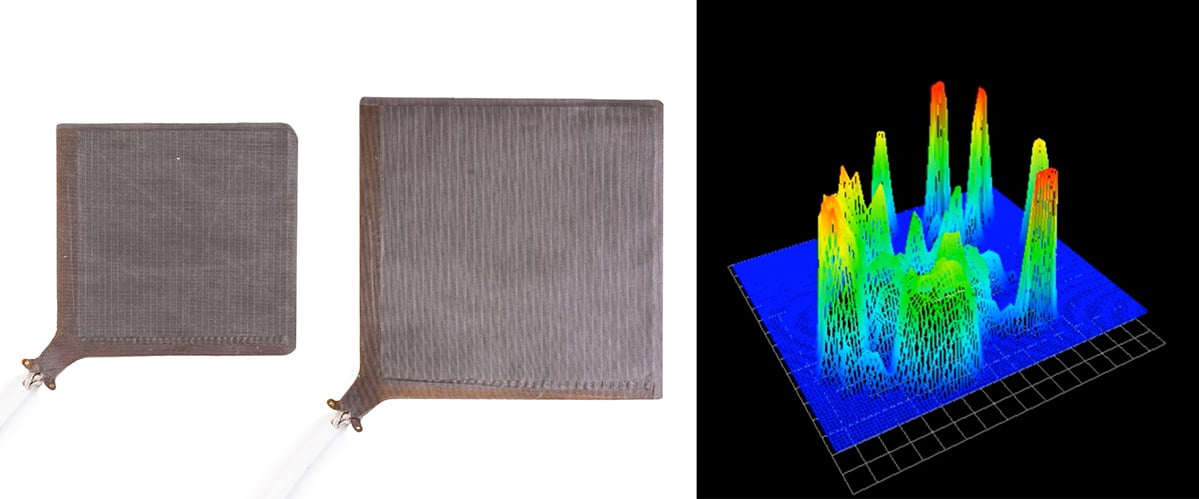Capacitive tactile sensing has been a driving force in the popularization of such ubiquitous touchscreen-based technologies as smartphones and tablets. In order to fully explore the potential of capacitive tactile sensors, however, engineers must first understand the basics of the technology. To that end, we’ve put together a quick primer on tactile pressure-measurement systems to bring you up to speed.
TACTILE PRESSURE-MEASUREMENT SYSTEMS

*Image: Our TactileHead sensor, which measures and maps contact pressures on the head. Link.
Although lumped in with the pressure and force sensor families, tactile sensing has carved out its own unique niche within these broader buckets. Tactile sensors provide an added dimension to force sensing by collecting data on both the quantitative force measurement as qualitative visualizations on how the forces are actually distributed in a specified area.
To perform these functions, tactile sensors employ either resistance- or capacitance-based technologies. Whereas resistive or piezoresistive tactile sensors measure the resistance of a conductive ink, elastomer, or foam between two points, capacitive tactile sensors exploit the electrical property of capacitance, which is the ability of a system to store an electrical charge. As you my recall from physics class, capacitance is often illustrated using the example of two parallel electrodes separated by an air gap. Upon applying a charge, capacitance of the electrodes increases as the gap decreases.
In the case of our capacitive tactile sensors, however, a proprietary compressible dielectric matrix is placed in the gap between the electrodes. Enabling the creation of tactile pads and arrays, the dielectric matrix acts like a spring and compresses in response to applied pressure. As with the classic example, capacitance changes as the gap decreases; this change is processed either as a discrete element or in a matrix configuration when scanned through electronics.
TACTILE ARRAY SENSORS

*Image: Our TactileArray sensor, which measures and maps contact pressures. Link.
Tactile Array sensors are engineered by taking this concept one step further. Electrodes are arranged as orthogonal, overlapping strips in a lattice pattern. Each point of intersection in this lattice design forms a distinct capacitor, thereby enabling the measurement of capacitance—and, thus, local pressure—at a single point by selectively scanning an individual row and column in the array.
The resulting capacitive tactile sensing technology boasts design flexibility, sensitivity, and stability among its advantages over competing technologies. It also can feature a very thin and stretchable sensors, despite the addition of the material between electrodes. But the properties and features of a capacitive tactile sensor design are ultimately determined by material selection. Advanced conductive materials lend conformability and stretchability to the sensor design; however, material selection is based on the needs of a particular application.
Still have some lingering questions about how the technology works? Feel free to contact us for more information at info@pressureprofile.com.

